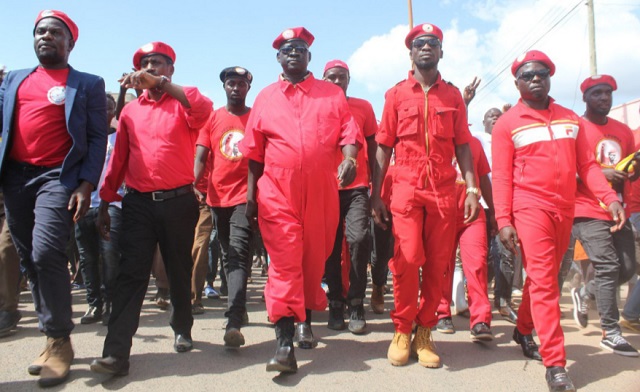
Speaking from his bed in Mulago National Referral Hospital before he was whisked into hiding, Kasumba said he was walking from work on the evening of Aug.28 when two men attacked him. He said the men hit him on the head before “crucifying” him. He said he worked at a shopping arcade called Jesco which is part of Ham Shopping Centre in downtown Kampala.
According to Kampala Metropolitan Police, before Kasumba was attacked, three days earlier, on Aug.25, an unidentified man “approached him at his work place and confronted him to stop supporting NRM and President Museveni.”
It still remains unclear whether Kasumba was a flamboyant NRM supporter in downtown Kampala, an area parked with thousands of traders in several high-rise shopping arcades selling all sorts of merchandise.
Many political commentators say the attack on Kasumba is probably a hint about how violent the 2021 general election might turn out to be unless Ugandans sober up.
Prepare for violence
Kasumba’s ordeal came just days after the Women’s Democracy Network Uganda and the Innovation for Democratic Engagement and Action released a report last month predicting that the 2021 general election will be the most violent ever in Uganda.
The report titled, “Early warning signs for violence in Uganda’s 2021 elections and structures and strategies for mitigation” found that 83% of people surveyed in 13 districts across the country feared violence will be ‘unprecedented’ in the next election.
Perry Aritua, the executive director of Women’s Democracy Network-Uganda told The Independent on Aug.30 that people do not want to listen to each other as long as they come from different political groups. In the survey, political intolerance stood at 32.6%.
“Those interviewed (for the survey) said the major tool to be used for violence is word of mouth but when you connect words to intolerance, then you get a recipe for disaster.”
Aritua blames political leaders who, she says, are not doing enough to diffuse the tension that is building ahead of the 2021 election.
Most of the tension appears to be between the yellow colour (for the ruling National Resistance Movement) and red, for the People Power Movement.
The red colour took on new meaning in Uganda’s politics during the debate in Parliament on the Age Limit Bill, 2017. MPs who opposed the bill adopted the red colour to symbolize their resistance to the removal of the presidential age limit.
The Bill was overwhelmingly passed by 317 NRM-leaning MPs against the 97 for the opposition. But that did not end the opposition MPs from associating with the colour red. In recent by-elections and other political events, the colour has been a unifying factor for politicians pushing the “People Power” agenda.
There are other colours; blue for the Forum for Democratic Change and white and green for DP. But there have been fewer incidents around them; possibly because they are more commonly won by members of the public. It could also be because DP has generally pursued peaceful politics and, although former FDC president, Rtd Col. Kizza Besigye has shown a militant streak and tactics, the party has remained peaceful.
The emergence of the People Power group, which rose to prominence after battling security forces in Parliament in a fight that left property destroyed and many of them arrested, has raised the likelihood of nation-wide violence.
People Power was blamed for violence in the Arua by-election that left President Yoweri Museveni’s convoy attacked by a rally crowd. Museveni’s security said a rear window of one of the cars in his convoy was smashed with stones. The driver of the leader of the People Power group was shot dead in reprisal attacks by the security.
President Museveni in one of the public missives he published in the media following the Arua Municipality by-election said the opposition forces who attacked his convoy were wearing red colours.
“This group has been putting on red to signify their intention to shed blood, and they have been putting on Army red berets to signify their intention of using military means,” he said. He added that the security forces have ignored “those threatening signals” but not anymore.
Many politicians and their supporters have been swelling the ranks of the People Power group. Many believe state inspired violence during elections must be met with organised civilian resistance.
 The Independent Uganda: You get the Truth we Pay the Price
The Independent Uganda: You get the Truth we Pay the Price


